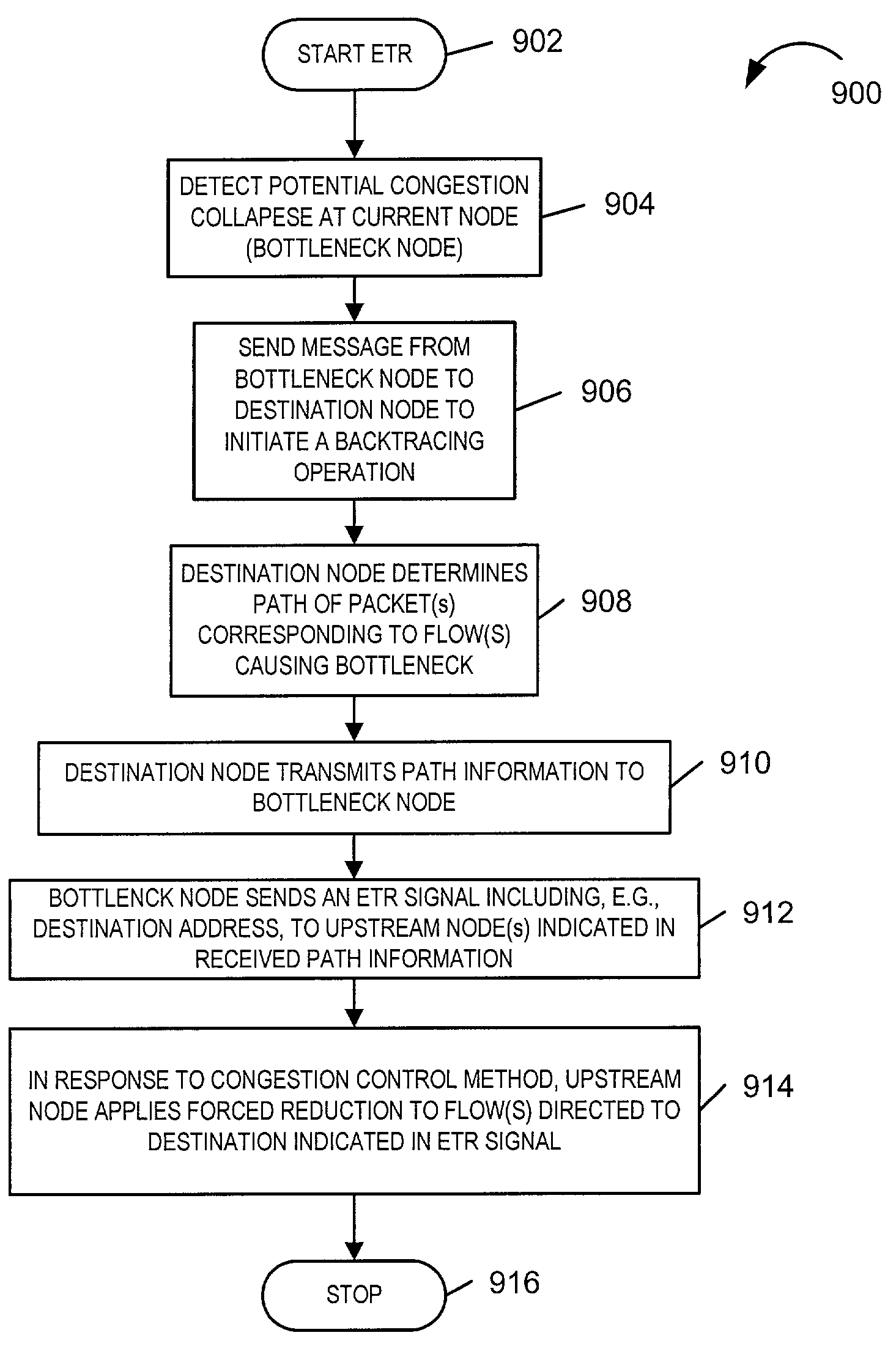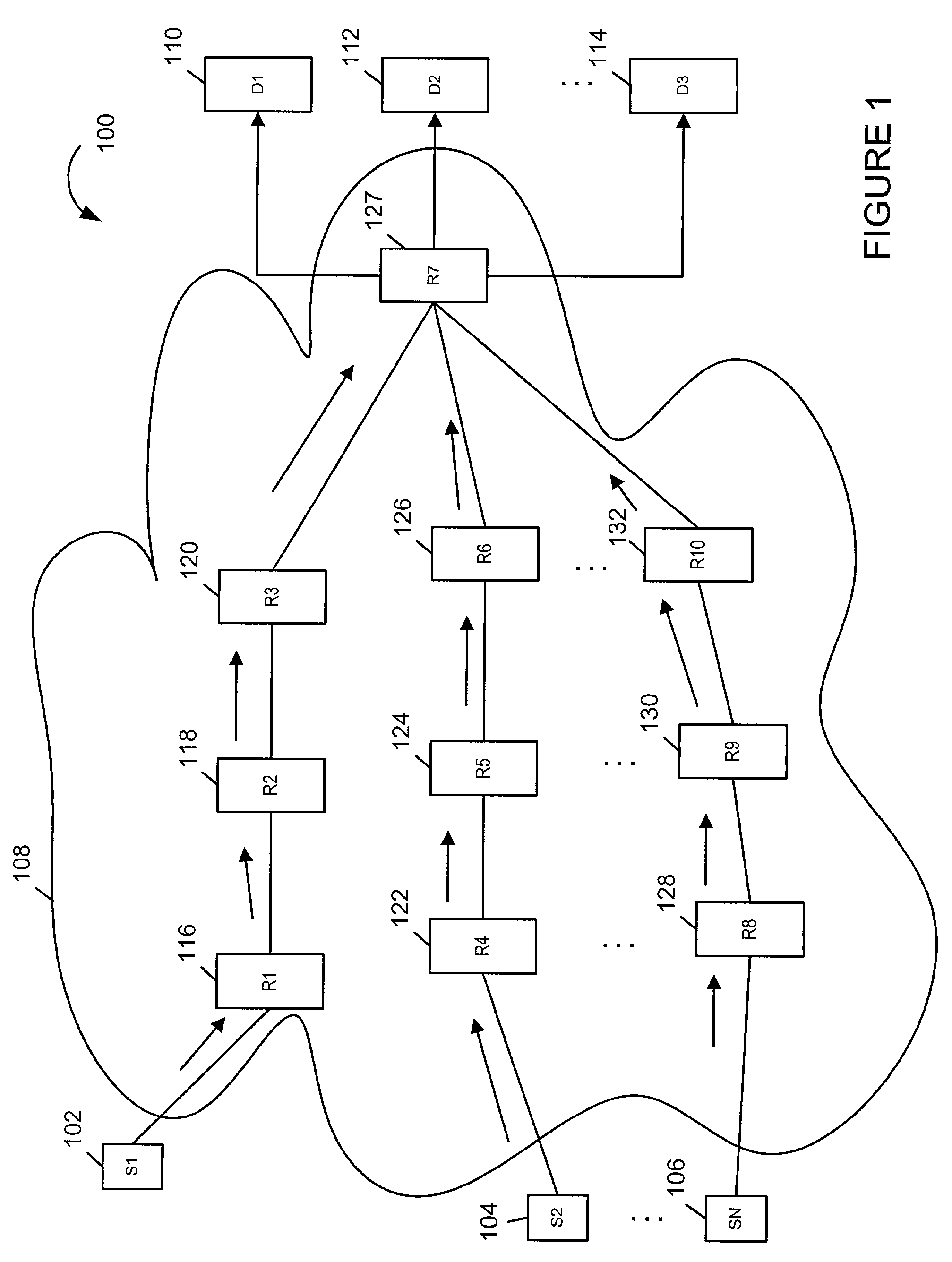Early traffic regulation techniques to protect against network flooding
a technology of network flooding and early traffic regulation, applied in the field of communication systems, can solve the problems of preventing legitimate communications, causing congestion at certain nodes, and affecting the flow of traffic used in n-dos attacks, and achieve the effect of reducing the flow of traffi
- Summary
- Abstract
- Description
- Claims
- Application Information
AI Technical Summary
Benefits of technology
Problems solved by technology
Method used
Image
Examples
Embodiment Construction
[0036]The present invention is directed to congestion control methods and apparatus. The methods and apparatus of the present invention are well suited for defending against network Denial-of-Service (N-DoS) attacks.
[0037]FIG. 1 illustrates a communications system 100 implemented in accordance with the present invention. The system 100 comprises a plurality of sources 102, 104, 106, an internet 108 and a plurality of destination nodes 110, 112, 114. The internet 108 may be a corporate internet or the world wide Internet. The internet 108 comprises a plurality of nodes R1 through R10116, 118, 120, 122, 124, 126, 127, 128, 130, 132 connected together as shown in FIG. 1 by the use of solid lines. Each of the nodes may be, e.g., a router or a switch. Arrows are used in FIG. 1 to indicate the flow of packets, e.g., between source devices S1, S2, . . . , SN, 102, 104, 106 and destination device 112. While FIG. 1 shows flows of packets to destination device D2112 from sources S1, S2, . . ....
PUM
 Login to View More
Login to View More Abstract
Description
Claims
Application Information
 Login to View More
Login to View More - R&D
- Intellectual Property
- Life Sciences
- Materials
- Tech Scout
- Unparalleled Data Quality
- Higher Quality Content
- 60% Fewer Hallucinations
Browse by: Latest US Patents, China's latest patents, Technical Efficacy Thesaurus, Application Domain, Technology Topic, Popular Technical Reports.
© 2025 PatSnap. All rights reserved.Legal|Privacy policy|Modern Slavery Act Transparency Statement|Sitemap|About US| Contact US: help@patsnap.com



